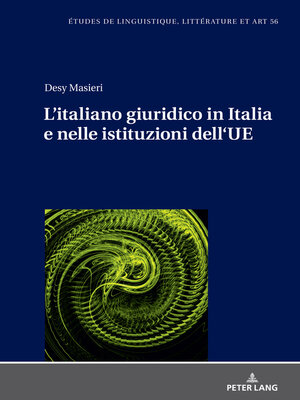L'italiano giuridico in Italia e nelle istituzioni dell'UE
ebook ∣ Etudes de linguistique, littérature et arts / Studi di Lingua, Letteratura e Arte
By Maria Załęska

Sign up to save your library
With an OverDrive account, you can save your favorite libraries for at-a-glance information about availability. Find out more about OverDrive accounts.
Find this title in Libby, the library reading app by OverDrive.



Search for a digital library with this title
Title found at these libraries:
| Library Name | Distance |
|---|---|
| Loading... |
The present doctoral dissertation investigates the Italian language of the law and the language of EU legal acts and offers a comparative analysis thereof. It is divided into a part concerning theory and an analytical part. The first part presents the characteristics of both languages to gain a wider perspective on the topic and forms the starting point for analysis. The analytical part opens with a description of the selected corpus and a literature review of the field as an introduction to qualitative corpus analysis.
The occurrence of borrowings from English and Latin is the focus of the lexical analysis. The subsequent chapter concerns technical terms based on a division into tecnicismi specifici and tecnicismi collaterali, which have a strictly stylistic function. In order to render the research more objective, leading Italian grammar books (Dardano, Trifone, Serianni, Salvi e Vanelli) and the GRADIT, Treccani, and Internazionale online dictionaries were employed. The syntactic analysis concerns the occurrence of the most important syntactic phenomena to identify the differences and similarities between the language of EU legal acts and the Italian language of the law.
Furthermore, corpus word count normalization to a million was carried out in the lexical analysis in order to obtain objective results concerning the occurrence of a given linguistic phenomenon and to minimize the differences in the word count between groups of texts. The conclusions constitute a summary of the observations from the analytical part and present potential research perspectives.







